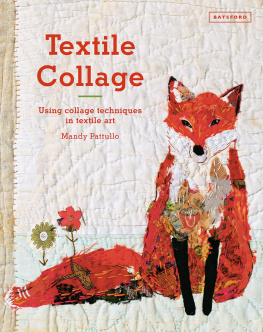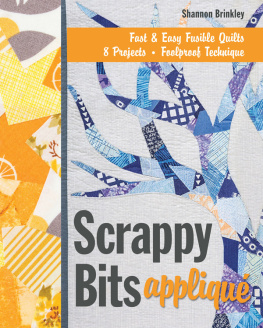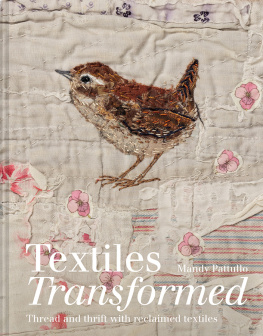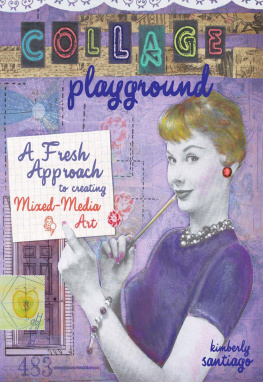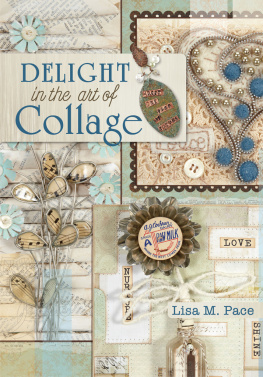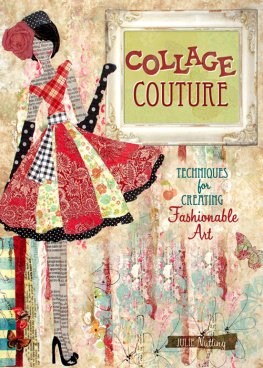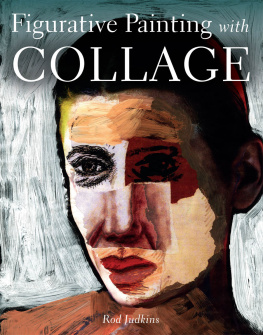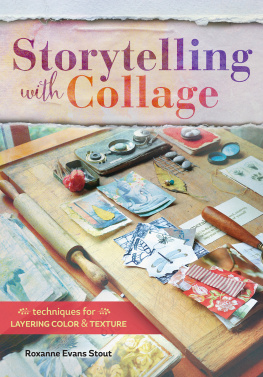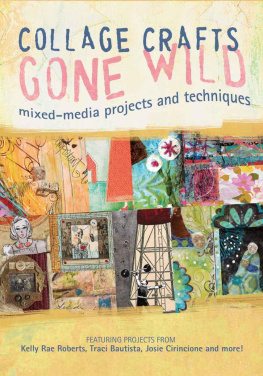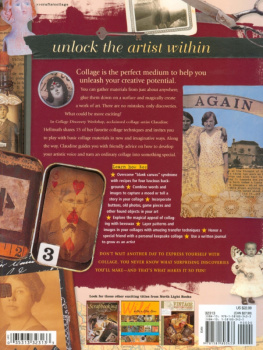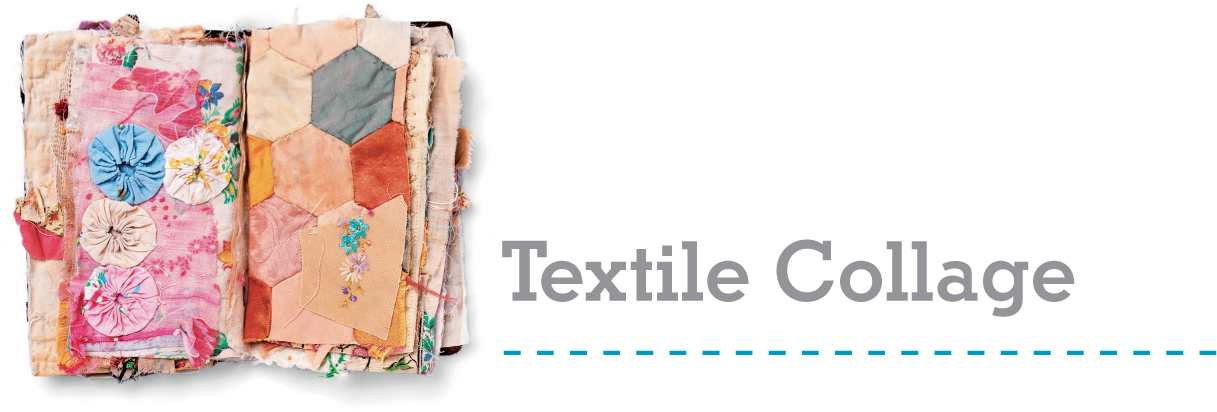
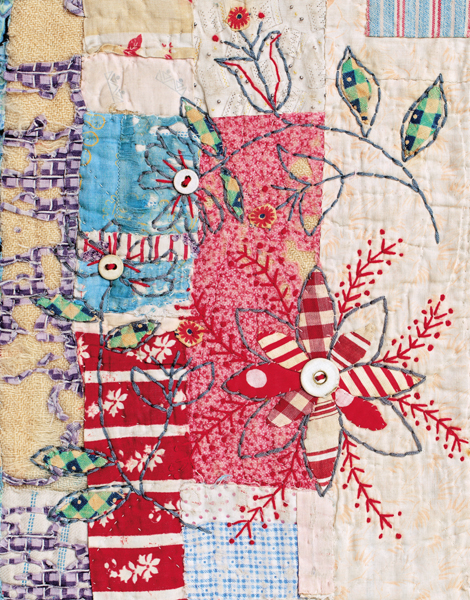


Contents

Flower corsage constructed from old quilt pieces and fabrics (see ).
Introduction
I came to textile collage through a lifetime of collecting fabrics, making patchworks and training as a surface pattern designer. My training encouraged me to look at textile archives and decorative art for imagery and pattern to use in fabric design but I was also drawn to the textures and resonance of old fabrics themselves, and became a collector of antique and ethnic textiles and particularly of old quilts. There came a point where I had to start using these precious finds in my practice rather than hoarding them. By cutting, tearing and unpicking, I discovered that I was interested in mixing things up, the possibilities of layering and assembling, and found myself doing collage with fabric.
Collage is traditionally associated with paper. My favourite fine artist has always been Robert Rauschenberg, and he and Kurt Schwitters, Peter Blake and Joseph Cornell have created respected works of art through their careful arrangements of paper scraps and sometimes fabric.
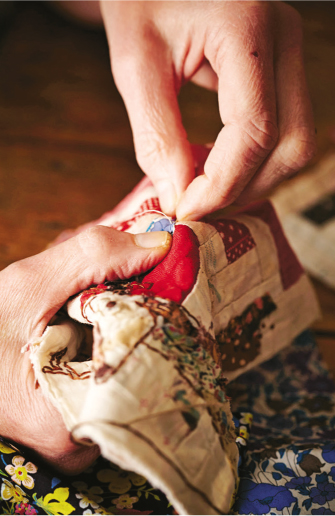
Stitching into a piece of an old log cabin quilt.
The technique can easily be transferred to fabric and is a most satisfying medium in which to work because when you complete a project a transformation has occurred. From a seemingly random collection of scraps you have created a cohesive and pleasing composition. I have also chosen it as the main focus of my work because of its relationship to the thrift and make, do and mend culture of past times, in particular utility patchworks and quilts made by women in domestic settings. The collages I make, like those early patchworks, bring together precious fragments to form evocative compositions. The viewer is forced to re-examine fabrics that have become flawed through wear and tear, to find in them a new beauty. My collages are nearly all hand pieced for the same reason, as the slowness of hand stitching gives me time to build up a relationship with even the shabbiest of fabrics.
Fabric collage is a kind of patchwork but without having to follow a pattern and a kind of appliqu without the templates. There is a freedom in the art of fabric collage, which allows you continually to arrange and rearrange and create anything from pictures and wall hangings to books, garments and accessories. I have done all of these things and now hope to inspire you too, to use those collections of fabric and textile treasures you have collected for years or are about to find, to indulge in fabric collage.
When I adjust materials of different kinds to one another, I have taken a step in advance of mere oil painting, for in addition to playing off colour against colour, line against line, and form against form, I play off material against material
KURT SCHWITTERS
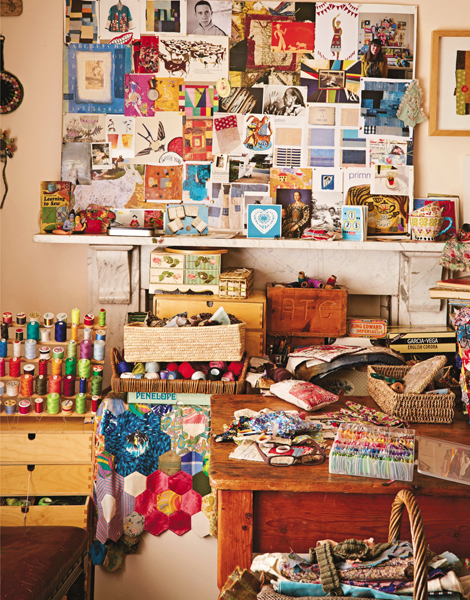
A corner of my studio at The Hearth, Horsley, Northumberland.
MATERIALS
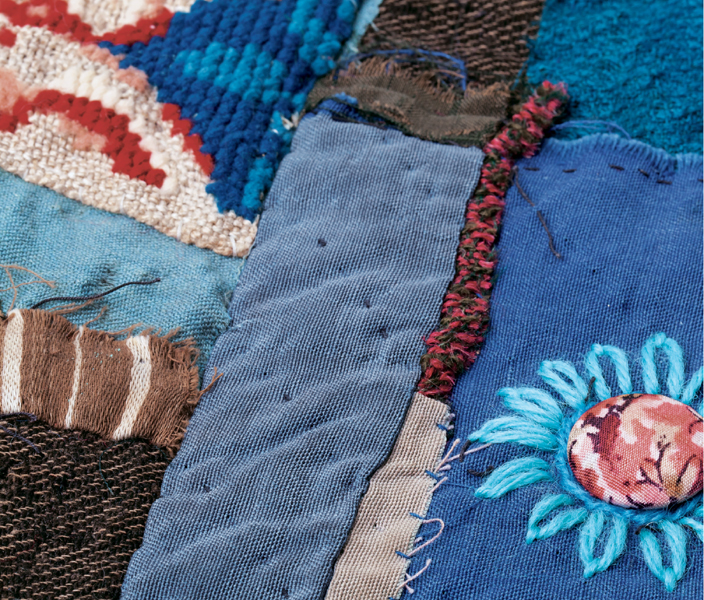
Button Flower (detail), 2013. 25 x 43cm (10 x 17in).
Every artist needs materials to create a work of art. The materials may not be unusual but it is the way they use them that matters. The artist needs to develop a style and visual language where the materials are used to construct the work, but where a transformative process has been undertaken. My materials are fabric and thread easily accessible to everyone but I am selective about the fabrics I work with, as I want them to tell a story which is mine and not someone elses. I have chosen to work with materials that come to me not through purchasing in shops, online or at shows, but are inherited, gifted and given, or purchased second hand. I actively seek out the worn and torn. Fabrics that are stained are not rejected as they have a history, and signs of wear and tear show me that materials have been used or loved. My collection of fabrics not only gives me a palette of colours but also provide me with sensory stimulation with their rough edges, textures and stitched marks. The materials you collect need to be personal to you, and if you seek out the unusual and fabrics that are a little more difficult to find then you too will be able to develop a signature style.
Hunting and gathering
The lovely thing about fabric collage is that you have the opportunity to create a resolved piece of work using a wide variety of materials. It encourages you to collect and take a fresh look at the worn and shabby, the textured, the printed, the shiny, the transparent, the embroidered. You will not reject the stained and darned or fabrics marked by mildew and rusty pins, as all of these can be added to the mix. It is a thrill to find these items through online auction sites, visiting vintage fairs and flea markets or rummaging in charity shops. You may be lucky enough to have inherited some fabrics and embroidered pieces that hold memories for you of the person who made them. What are you keeping them for? If you are not using them, and they are stored somewhere you cannot see them, cut them up and use them to create works of art, which bring together your own hands and those of past generations. To me this link with the past is one of the most important elements of why I do what I do. As I reinvigorate, rescue and reclaim fabrics and domestic needlework from anonymous wearers and embroiderers I feel a real sense of connection to the people who wore and made them.
In this chapter I will introduce you to the interesting fabrics you can look out for and give a little bit of history about some of them. Some of the textiles described will be more suitable for the base or foundation of your piece whilst others can be cut or torn into smaller pieces for collage and appliqu.
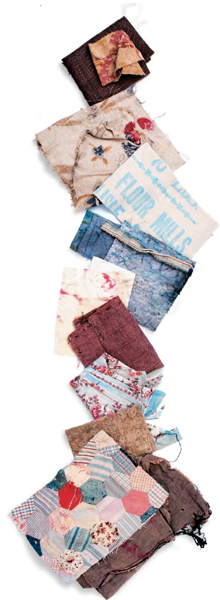
A fabric selection from my studio including pieces of quilt, flour sack, printed cotton, denim and furnishing fabrics.
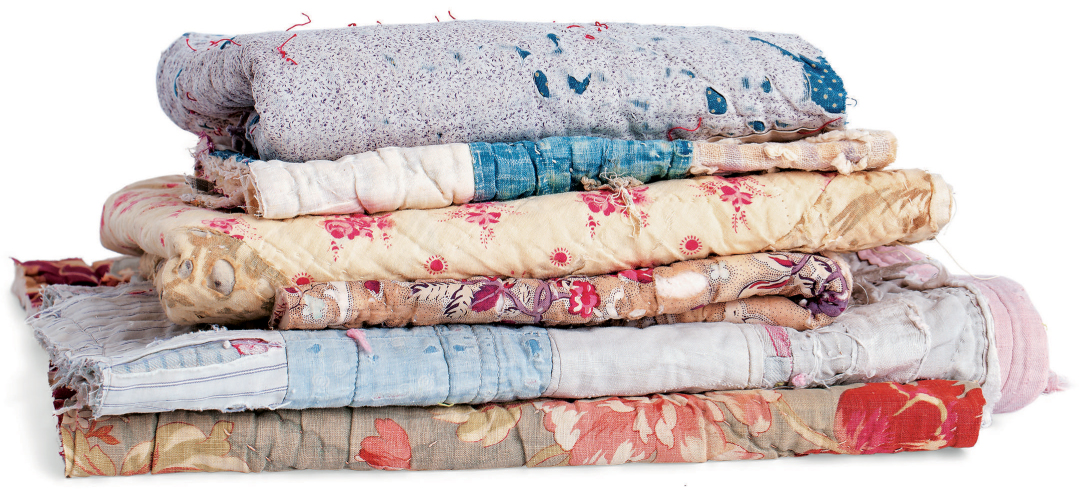
A pile of old patchwork quilts ready to be used as the foundations for collage or unpicked for their fabrics.
Quilts
The patchwork quilt arose from necessity. The thick wadding in between a top and bottom layer of fabric, held together by knotting or quilting stitches, provided an essential warm layer at night in the days before central heating. Quilts were sometimes carefully designed, and new and co-ordinated fabrics were bought, but on the whole the quilts of the late nineteenth and early twentieth centuries were thrifty affairs made from leftover dressmaking fabrics, recycled clothing and tailors samples. Old patchwork quilts are my passion. I love to see how they are put together, which designs have been used and how the colours of the fabrics work next to each other. Each piece of fabric may tell a story. I particularly like those pieces that may be poor in design but incorporate bits of wool, flannel and mens shirting.
Next page
